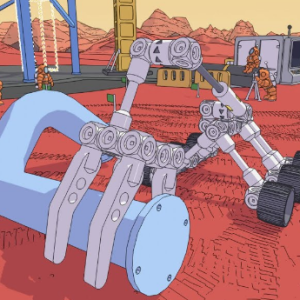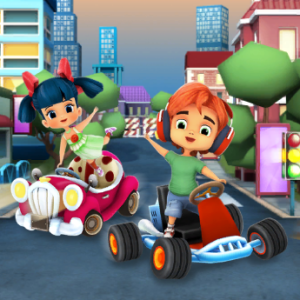Similiar games
Mars First Logistics begins by placing the player on the surface of Mars with a set of modular parts and a simple objective: build a machine that can carry cargo from one point to another. There are no predefined vehicles, no default rover and no standard blueprint. Instead, the player becomes responsible for designing every functional element, from the frame to the wheels. The open-ended construction system turns each delivery into a puzzle shaped by physics, terrain and the limitations of the available components.
Building Frameworks And Testing Designs
In Mars First Logistics the player starts each mission by assembling a vehicle suited to the assigned cargo. A small object might require only a basic platform, while a long or tall item demands a more specialized frame. After assembling a prototype, the player drives it across the Martian landscape to observe how it behaves. Simple-looking slopes can cause instability, and small bumps can shift cargo unexpectedly. This process of building, testing and adjusting forms the central gameplay loop and encourages creative problem solving.
Core Mechanics And Engineering Considerations
The main systems of Mars First Logistics include:
- Constructing vehicles with modular wheels, joints, connectors and support beams
- Transporting items with different shapes, weights and balance requirements
- Completing missions that unlock additional parts or expanded building options
- Modifying designs to manage issues such as uneven terrain, weak frames or limited torque
These mechanics create an engineering-based challenge in which each vehicle becomes a custom solution. A design that works for one mission may be unsuitable for another, motivating players to rethink their approach with every new objective.
Terrain Influence And Mission Variations
As progress continues, Mars First Logistics introduces more complex tasks and less forgiving environments. Some routes require climbing steep inclines, others involve navigating tight passageways or protecting cargo from shifting. Because gravity on Mars is lower, vehicles behave differently than they would on Earth, creating unique challenges related to traction, momentum and weight distribution. The player must experiment with wheel spacing, stabilizers and articulated joints to produce reliable machines capable of completing missions consistently.
Mars First Logistics provides a construction-focused experience where the challenge lies in designing functional vehicles, not following predetermined paths. The freedom to experiment allows players to develop their own engineering strategies, refining each design through trial and error. Missions reward innovation rather than perfection, and the open-ended building tools encourage continued experimentation. Over time, the game becomes not merely a delivery simulator but an ongoing exploration of how structure, physics and creativity interact on the Martian surface.




















